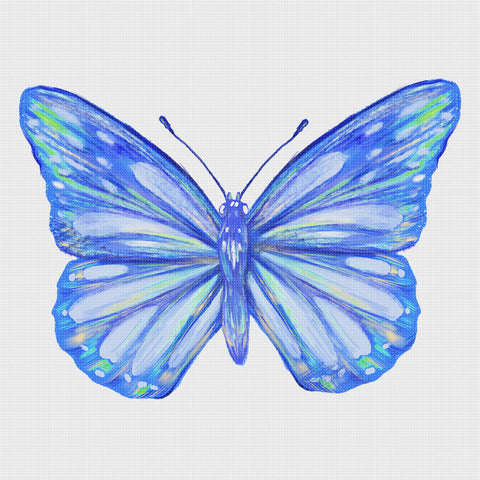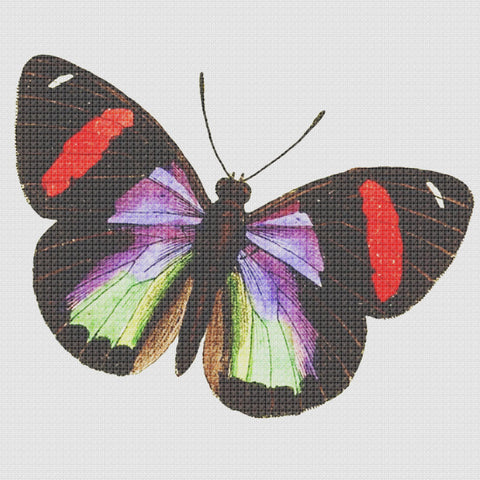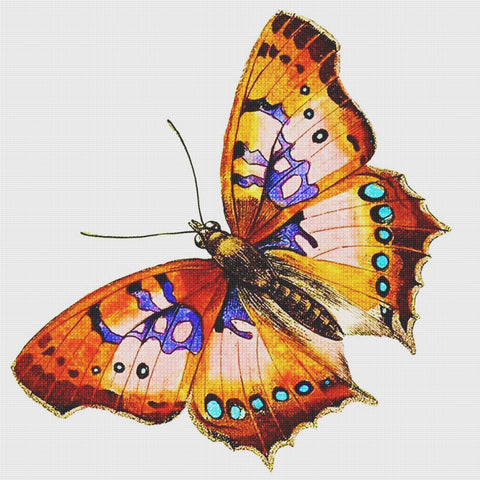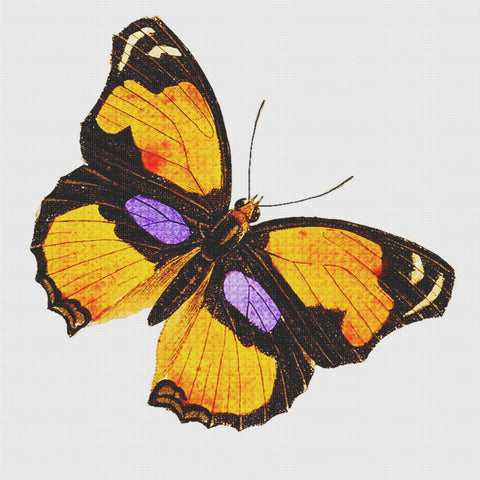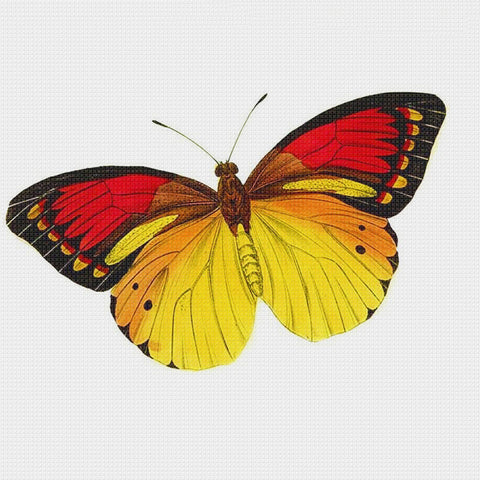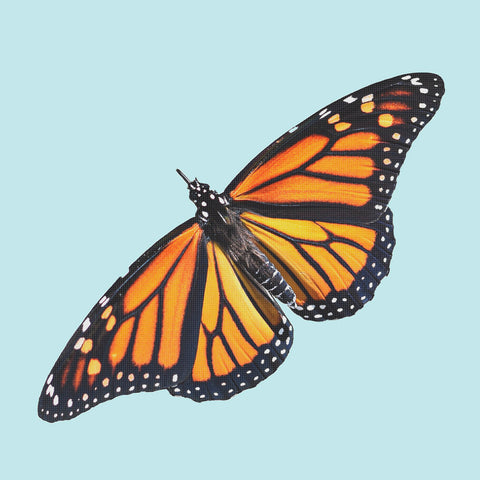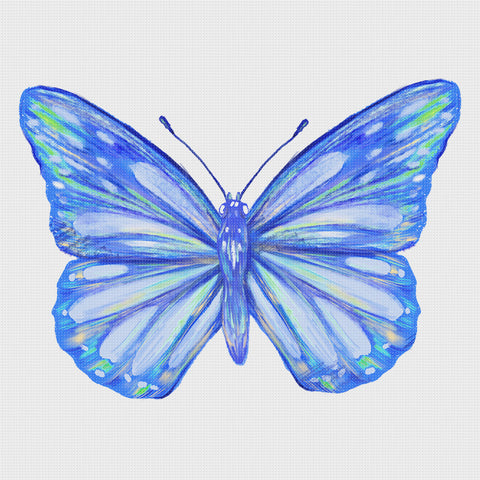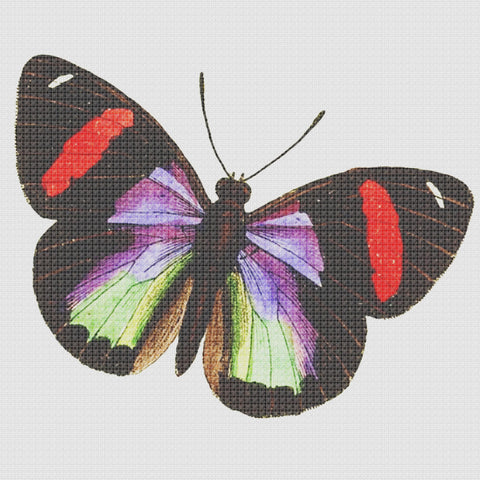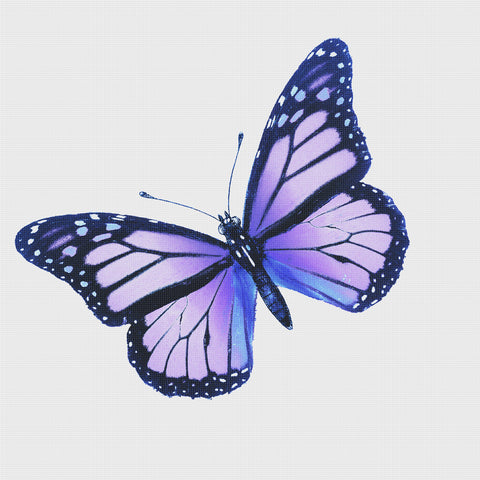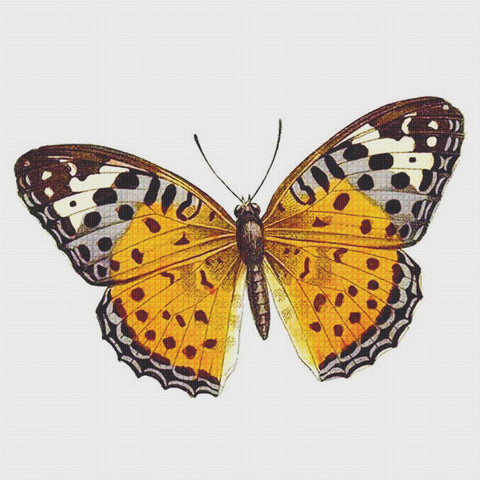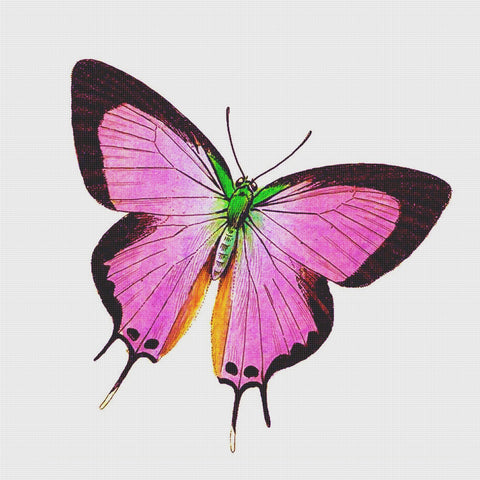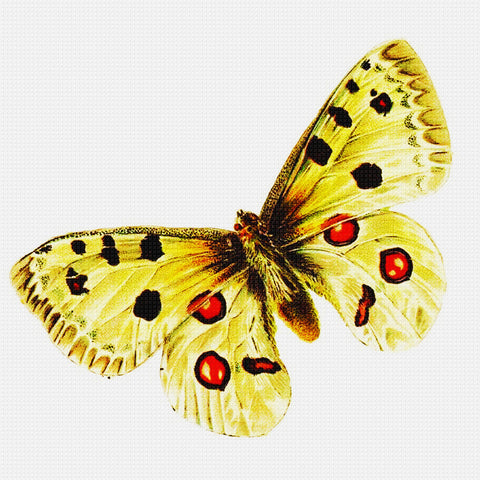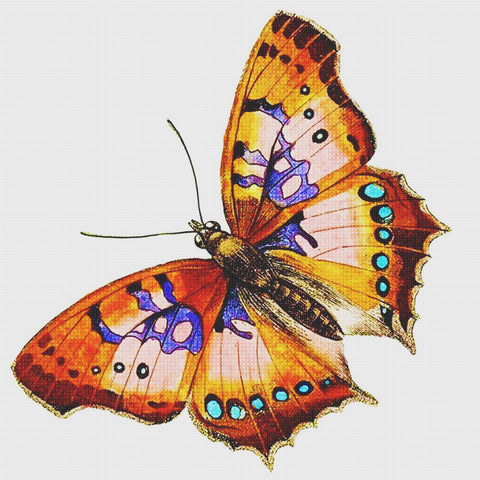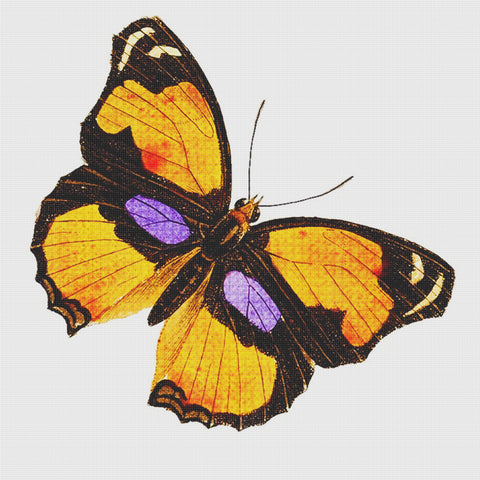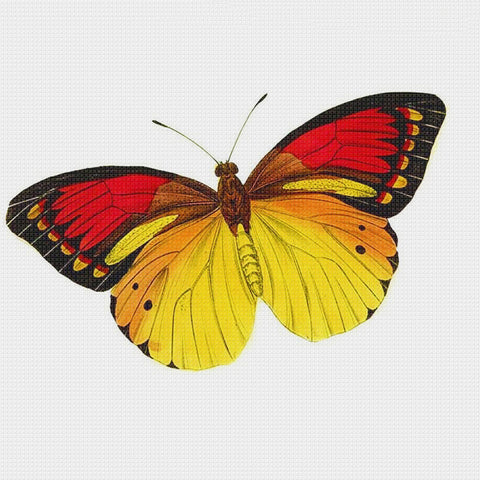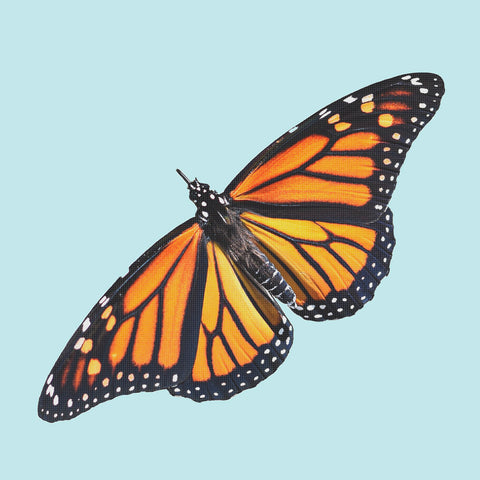Orenco Originals for the Artful Needleworker !
BUTTERFLY INSPIRED Counted Cross Stitch Charts Patterns

Butterflies
Butterflies have appeared in art from 3500 years ago in ancient Egypt. In the ancient Mesoamerican city of Teotihuacan, the brilliantly colored image of the butterfly was carved into many temples, buildings, jewelry, and emblazoned on incense burners. The butterfly was sometimes depicted with the maw of a jaguar, and some species were the reincarnations of the souls of dead warriors. The close association of butterflies with fire and warfare persisted into the Aztec civilization; evidence of similar jaguar-butterfly images has been found among the Zapotec and Maya civilizations.
Butterflies are widely used in objects of art and jewelry: mounted in frames, embedded in resin, displayed in bottles, laminated in paper, and used in some mixed media artworks and furnishings. The Norwegian naturalist Kjell Sandved compiled a photographic Butterfly Alphabet containing all 26 letters and the numerals 0 to 9 from the wings of butterflies.
Alice meets the caterpillar. Illustration by Sir John Tenniel in Lewis Carroll's Alice in Wonderland, c. 1865
Sir John Tenniel drew a famous illustration of Alice meeting a caterpillar for Lewis Carroll's Alice in Wonderland, c. 1865. The caterpillar is seated on a toadstool and is smoking a hookah; the image can be read as showing either the forelegs of the larva, or as suggesting a face with protruding nose and chin. Eric Carle's children's book The Very Hungry Caterpillar portrays the larva as an extraordinarily hungry animal, while also teaching children how to count (to five) and the days of the week. A butterfly appeared in one of Rudyard Kipling's Just So Stories, "The Butterfly that Stamped”.
-
-
Colorful Rainbow Butterfly in Flight Counted Cross Stitch Pattern DIGITAL DOWNLOAD
-
Pink, Orange and Black Butterfly in Flight Counted Cross Stitch Pattern DIGITAL DOWNLOAD
-
Orange, Purple and Black Butterfly in Flight Counted Cross Stitch Pattern DIGITAL DOWNLOAD
-
Gold, Red and Black Butterfly in Flight Counted Cross Stitch Pattern DIGITAL DOWNLOAD
-
A Monarch Butterfly in Flight Counted Cross Stitch Pattern DIGITAL DOWNLOAD
-
Watercolor Blues Butterfly in Flight Counted Cross Stitch Pattern
-
Colorful Rainbow Butterfly in Flight Counted Cross Stitch Pattern
-
Purple and Black Mosaic Butterfly in Flight Counted Cross Stitch Pattern
-
Orange, Grey and Black Butterfly in Flight Counted Cross Stitch Pattern
-
Mauve, Lavender and Black Butterfly in Flight Counted Cross Stitch Pattern
-
Ivory, Yellow, Orange and Black Butterfly in Flight Counted Cross Stitch Pattern
-
Pink, Orange and Black Butterfly in Flight Counted Cross Stitch Pattern
-
Orange, Purple and Black Butterfly in Flight Counted Cross Stitch Pattern
-
Gold, Red and Black Butterfly in Flight Counted Cross Stitch Pattern
-
A Monarch Butterfly in Flight Counted Cross Stitch Pattern

